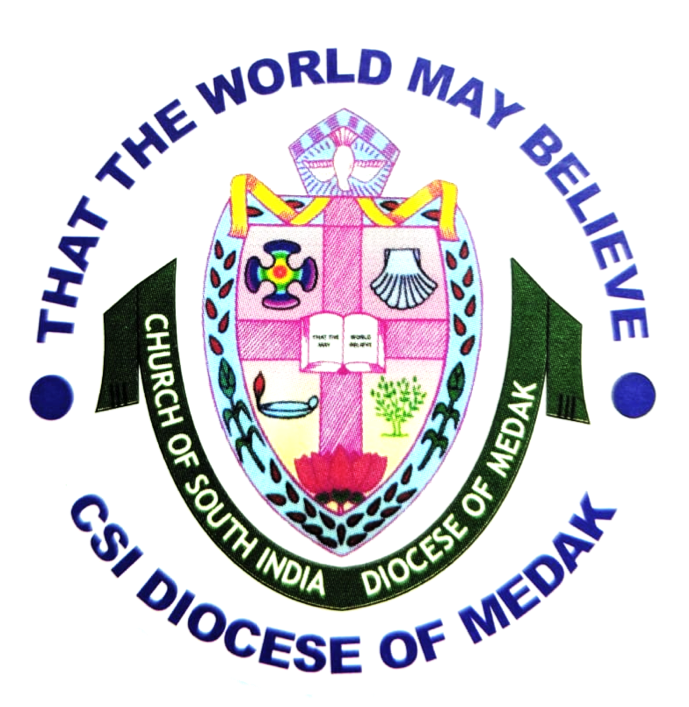
About
Medak Cathedral History
Rev. Charles Walker Posnett (1870 - 1950)
Charles Walker Posnett (1870- 1950) was born in Sheffield to a prominent Methodist family. He was educated at Woodhouse Grove School and at Kingswood School both of which were schools for the sons of Methodist ministers.
He then went on to Richmond College, Surrey to train for the ministry. He also undertook medical training at the London Hospital in order to fully prepare himself for a life of missionary service. In 1895 he was appointed to serve as a missionary in Hyderabad, Deccan, then an independent state under the Nizam of Hyderabad. After a couple of years he moved to Medak where he remained until the end of his missionary career in 1939. Probably, his most visible legacy is the large Church in Gothic style he had built at Medak to accommodate the many villagers in and around Medak, particularly those from the Mala and Madiga castes, who had converted to Christianity in mass movements.
He also established a training institution for teachers and church leaders. During his time in Hyderabad the area was afflicted with two severe famines, one in the late 1890s and the other from 1919 to 1921. Associated with him in his work were a number of other Methodist missionaries among them his sister, Emilie Posnett and Charles Gordon Early (1889-1975) who was appointed to Medak in 1914.

The cathedral was built under the stewardship of Reverend Charles Walker Posnett who was driven by the motto My best for my Lord. Rev. Posnett arrived in Secunderabad in 1895. He first ministered among the British soldiers at Trimullghery. Unsatisfied with the army work, he launched forth into villages. In the year 1896, Rev. Charles Walker Posnett visited a village called Medak and built a bungalow there by staying in dock bungalow. There was no railway route to Medak in those days. The journey of 60 miles (97 km) from Hyderabad had to be done on horseback and Rev. Posnett could do it in a day.
There were then hardly two hundred Christians in the whole of Medak area. When he came to Medak, there was a small tiled house as the place of worship. As the number of Christians increased, he felt the need for expanding the church building. Rev. Posnett soon raised a moderate structure on that very spot just enough for the Christian community within the Mission Compound in the traditional shape of a church.
He thought it was not a worthy place for divine worship. He started building the present Cathedral in 1914 on a sprawling 1,000 acres (4.0 km2) of land in Ghusnabad area.
The foundations for the new church were laid in the beginning of the year 1914. During the early part of the 20th century, Medak district was reeling under famine and Rev. Posnett in order to provide succour to the suffering masses gave the masses employment in the construction of the church instead of running a free kitchen. The construction work on the cathedral went on for 10 years. The cathedral was consecrated in 1924 by Rev. Posnett expressing his grateful thanks to God for mitigating the sufferings of the people. When several Christian groups became re-united as the Church of South India, the church became the cathedral church of the diocese of Medak in October 1947.
The cathedral is 100 ft (30 m) wide and 200 ft (61 m) long, and conforms to the Gothic Revival style. It can accommodate about 5,000 people at a time. The mosaic tiles were imported from Britain and are of six different colours. Italian masons from Bombay were engaged for laying the decorative flooring. Massive pillars built with fine-hewn and well dressed grey stone support the gallery and the whole edifice. The roof of the church is made sound-proof by means of hollow sponge material, and has an impressive style of vaulting. The surface of the vaulting has the shape of squares. The bell-tower is 175 ft (53 m) high. (It is said that when the nizam of Hyderabad discovered that the church would be higher than the harminar, he made a vain bid to have its height reduced.)
The biggest attraction of the Cathedral are its stained glass windows depicting different scenes from Christ’s life – Ascension behind the altar, Nativity in the west transept, and Crucifixion in the east transept. The windows were designed by Sir. O. Salisbury of England. The stained glass windows were installed at different periods. The chancel window depicting the ascension was installed in 1927, two years after the cathedral was built. The nativity window was installed in 1947 and the crucifixion window was installed in 1958.

